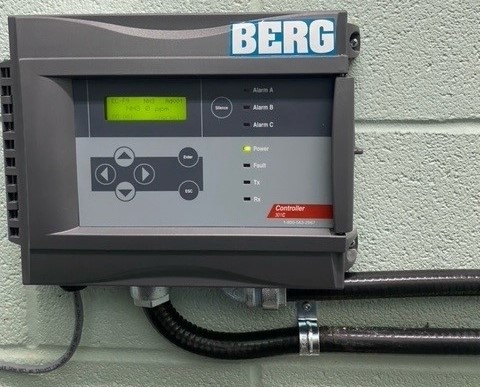- COMPANY
- INDUSTRIES
- PRODUCTS
- SERVICE
- CONTACT
With many recreational ice rink plants gearing up for rink season, a lot of preparations for their ice rink systems are already underway. Part of these preparations would be a "bump test" of your system's ammonia sensor or ammonia leak detection unit. A bump test may sound unusual but it's actually a common practice especially when dealing with ammonia.

A bump test is a functional test of a gas monitor. All sensors are challenged with a known quantity of gas, and instrument response is compared to the actual quantity of gas present. Bump testing a gas sensor involves flowing a concentration of gas that is slightly higher than the low alarm setpoint of the gas detector for a short period of time (usually less than one or two minutes). The purpose of a bump test is to confirm that a sensor responds to the presence of gas, in which the low alarm will activate and that the gas detector overall is operating appropriately.
The bump test is used to confirm that your life saving gas alarm device is working correctly. In other words, the ammonia sensors and alarm indicators are tested to ensure they are working before being used. However, a bump test does not measure the accuracy of the sensors or its state of calibration.
Electrochemical toxic gas sensors tend to output “0” in clean air and “0” when they have expired so it is important to bump test an ammonia sensor for critical applications to ensure the sensor has not yet expired. Whenever an ammonia (NH3) sensor has been exposed to an undetermined amount of NH3, a bump test should be performed.
Ammonia sensors have a lifespan of approximately two years in air. To make the most out of your sensor's lifespan, it is important to acknowledge how the gas concentration and the length of time of exposure affect the sensor. Regular exposure and long-term exposure to very low levels of ammonia over time will reduce the lifespan of the sensor. Exposure to very high concentrations of ammonia can kill the sensor, making it useless for detection. That said, it is important to use a lower concentration of NH3 gas for bump testing.
The length of time you will be applying the ammonia gas depends on the level of concentration of ammonia you are using for the bump test. In most cases, the low alarm setpoint is either 25 parts per million (ppm) or 35ppm. To perform the bump test, you will need a test gas that exceeds this low alarm point. There are three concentrations of NH3 gas that are available: 50ppm, 100ppm, 300ppm. For each of these you should use a different length of exposure of gas to the sensor.
For example, if the low alarm setpoint for NH3 is 25ppm and the bump test gas concentration is 50ppm, it could take up to approximately two minutes to trip the low alarm for a sensor of moderate age. If the low alarm setpoint for NH3 is 25ppm and the bump test gas concentration is 300ppm, it could take as little as 10 seconds to trip the low alarm for a sensor of moderate age.
In both cases, your goal is to trip the low alarm, but also reduce the exposure to the gas. Best practice is to remove the gas as soon as the alarm trips.
It is recommended that bump tests should be done once a month. If a bump test fails, a full calibration should be done. Otherwise, a full calibration should be done every 6 months. Depending on the amount of exposure to high or prolonged concentrations of ammonia, it is advisable to replace your sensor every 2 years. If your sensor is not functioning as it should, consider replacing your sensor more frequently.
Consider performing your bump test before the start of a working shift. That way, it can prevent any possible malfunctions and/or accidents in your plant. You should never use gas detection equipment without making sure that it is properly functioning. Make it a habit to train your staff on when and how to properly perform bump tests for your ammonia sensor.
A critical part of the bump test process is keeping a log of the readings. A consistent bump test schedule with accurate recorded results can better monitor the health of your ammonia leak detector and the gas detection system overall. It can help detect some inconsistencies and possible errors which may indicate that the detector is not performing properly and that it requires further attention.
Berg custom designs, manufactures, installs, and services industrial chilling solutions. Wherever unique cooling needs exist, in multiple industries and in varying environments around the globe, clients trust Berg expertise. Berg offers ammonia (NH3) sensors and ammonia ice rink chillers for your plant. Contact us to learn more and order one today.